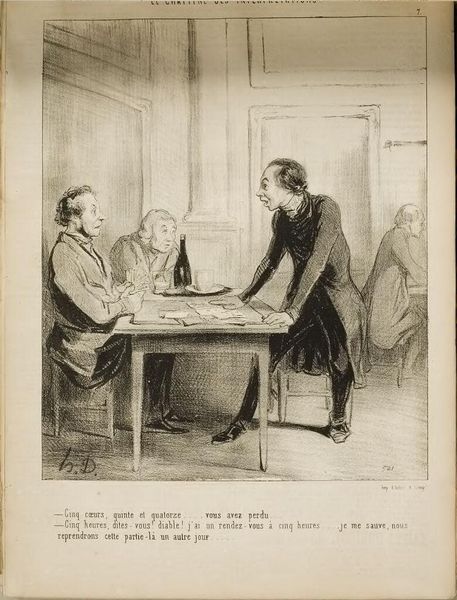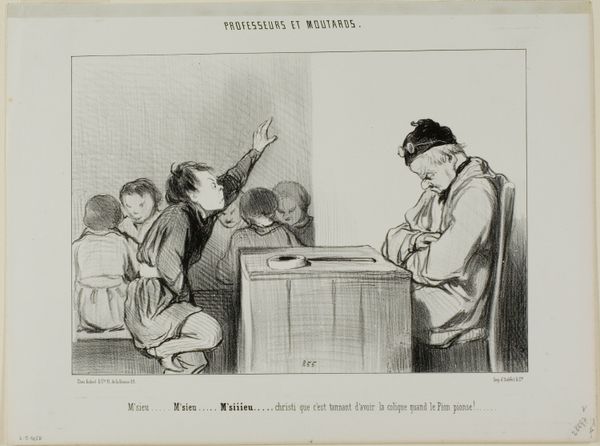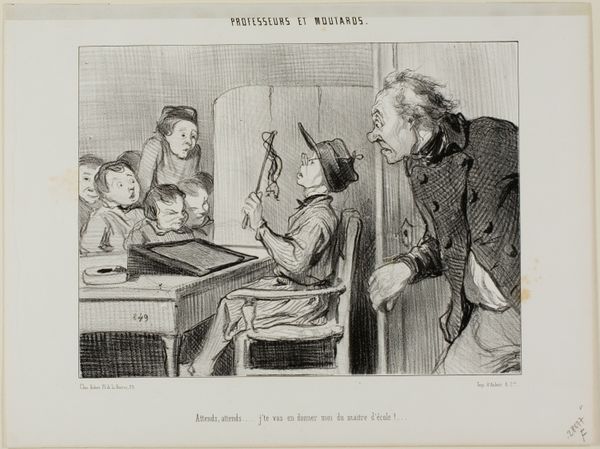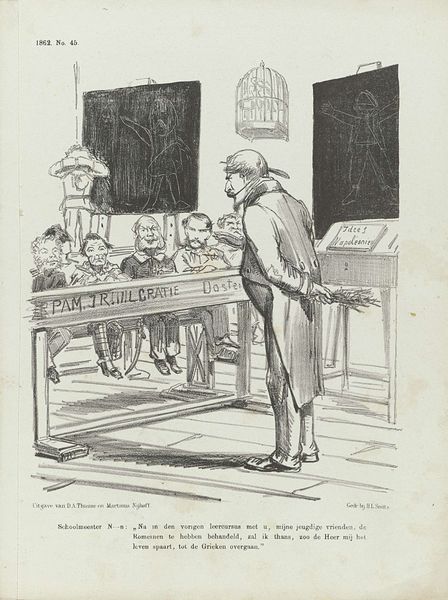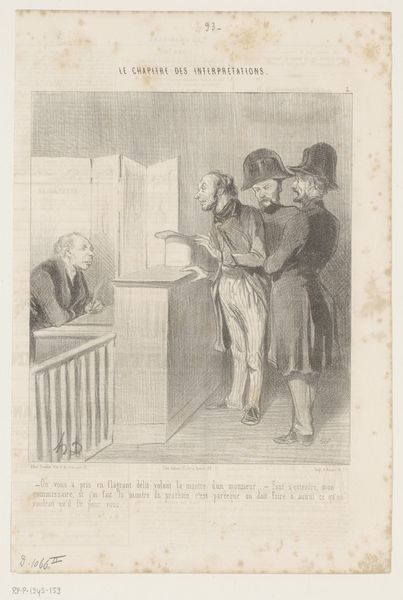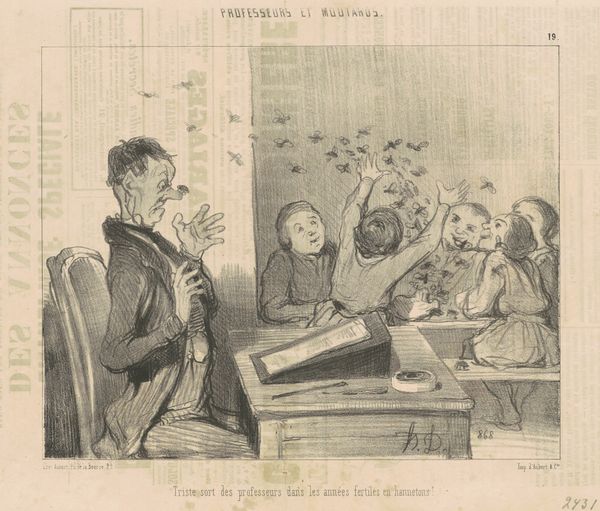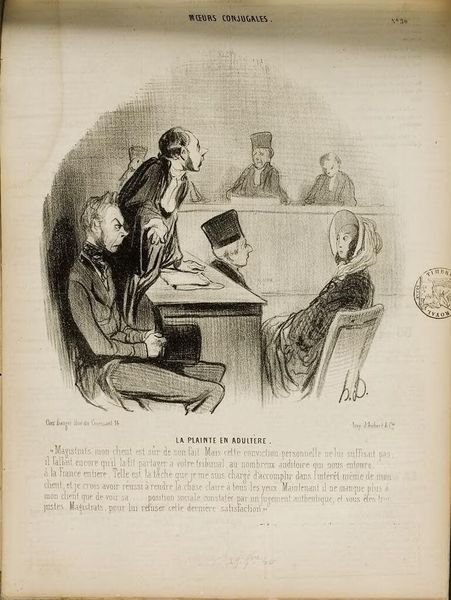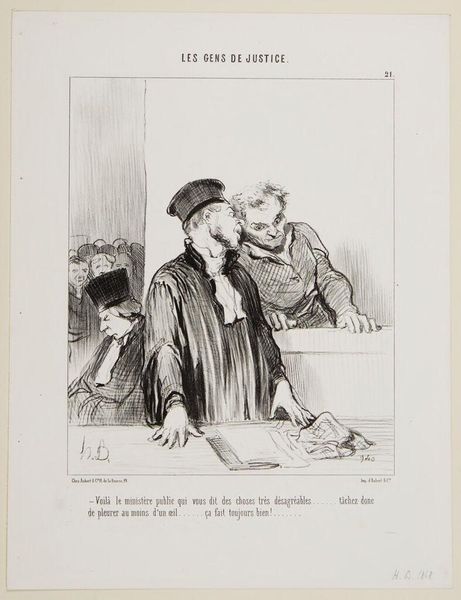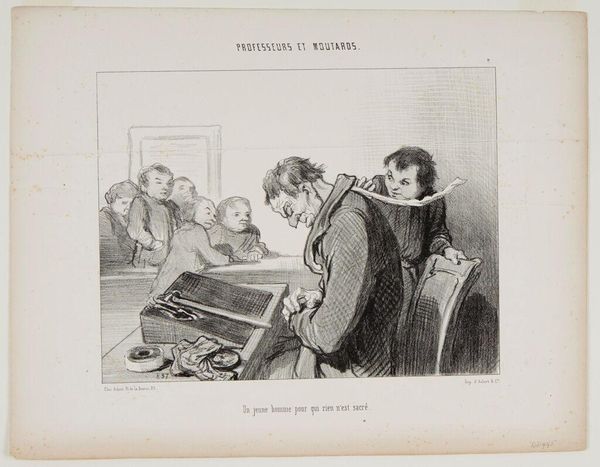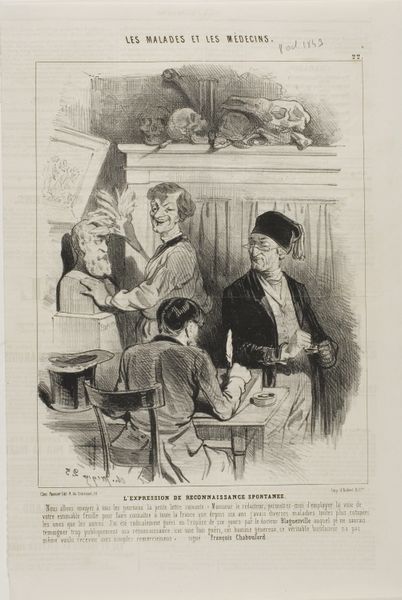
A Young Man to Whom Nothing is Sacred, plate 8 from Professeurs Et Moutards 1846
0:00
0:00
drawing, graphic-art, lithograph, print, paper, pencil
#
portrait
#
drawing
#
graphic-art
#
lithograph
# print
#
paper
#
romanticism
#
pencil
Dimensions: 191 × 246 mm (image); 246 × 323 mm (sheet)
Copyright: Public Domain
Editor: This is Honoré Daumier's "A Young Man to Whom Nothing is Sacred," a lithograph from 1846. It seems to capture a moment of disruption in a classroom, but the details are somewhat obscure. What do you see in this piece that might unlock its meaning? Curator: Well, first, the title is key. The phrase "to whom nothing is sacred" speaks volumes about a shift in societal values occurring during Daumier's time. We see a tension between tradition, represented by the somber professor and dutiful students, and a burgeoning irreverence symbolized by the disruptive youth. Editor: So, the disruption is intentional? It's not just a naughty child? Curator: Precisely. Think about the cultural context. This was a time of revolution and change, and Daumier often used satire to critique the bourgeoisie and their perceived hypocrisy. The "sacred" things – established norms, social order – were being questioned. Editor: I see... and is that reflected in the imagery itself? Curator: Absolutely. Note the young man’s defiant gaze, contrasting sharply with the downcast eyes of the others. Even his positioning, looming behind the professor, suggests an attempt to usurp authority. The artist wields the graphic and caricatures the people on view, but who does it represent on a broader stage? Who remembers the French Revolution when they look at it? Editor: That's fascinating! I hadn't considered the societal implications of such a seemingly simple classroom scene. Curator: Daumier's genius lies in his ability to embed complex social commentary within relatable scenes. We, perhaps, are those obedient students now. Editor: This gives me a fresh perspective on the lithograph, viewing it beyond a comical illustration.
Comments
No comments
Be the first to comment and join the conversation on the ultimate creative platform.
